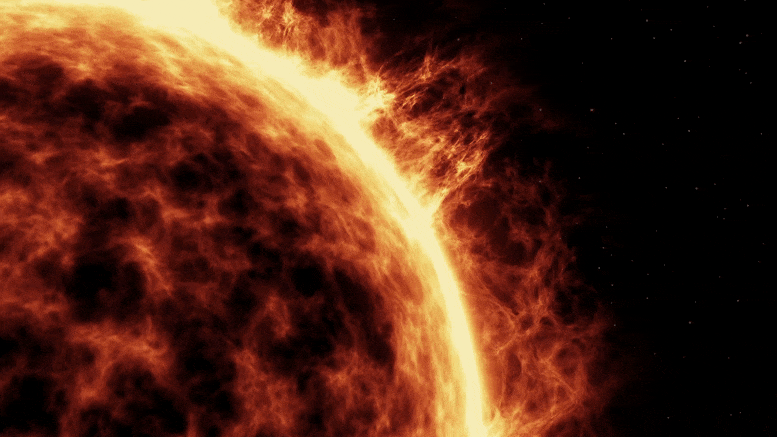
Using a unique mode of operation, scientists have been able to utilize the Solar Orbiter’s EUI camera to image parts of the Sun’s atmosphere previously difficult to capture. This was achieved through a last-minute modification to the camera, which is expected to influence future solar instrument designs. The enhancement allows for deeper insights into the Sun’s atmosphere, bridging the gap between classical EUV imagers and traditional coronagraphs.
Scientists have used Solar Orbiter’s EUI camera in a new mode of operation to record part of the Sun’s atmosphere at extreme ultraviolet wavelengths that has been almost impossible to image until now. This new mode of operation was made possible with a last-minute ‘hack’ to the camera and will almost certainly influence new solar instruments for future missions.
A Closer Look at the Modification
Solar Orbiter’s Extreme Ultraviolet Imager (EUI) returns high-resolution images of the structures in the Sun’s atmosphere. Scientists call this region the corona. During EUI’s construction, a last-minute modification to the safety door on the front of the instrument has allowed it to see deeper into its target region than originally specified.
“It was really a hack,” says Frédéric Auchère, Institut d’Astrophysique Spatiale, Université Paris-Sud, and a member of the EUI team. “I had the idea to just do it and see if it would work. It is actually a very simple modification to the instrument.”
It involved adding a small, protruding ‘thumb’, weighing a few grams, to the door of the instrument. As the door slides out of the way to let the light into the camera, if it is stopped halfway, the thumb covers the Sun’s bright disc, and EUI can detect the million times fainter ultraviolet light coming from the surrounding corona.
This movie shows an ultraviolet image of the Sun’s corona taken using the EUI occulter. An ultraviolet image of the Sun’s disc has been superimposed in the middle, in the area left blank by the occulter. The image of the Sun’s disc has been taken by NASA’s STEREO mission, which happened to be looking at the Sun from almost the same direction as Solar Orbiter at the same time, so the features on the surface have a good correlation to the features in the corona.
The grid pattern is an artifact caused by the mesh that is holding the 150 nm thick front filter. It is invisible in regular images but present (as expected) in occulter mode. The ‘WOW-enhanced’ label next to the time counter in the lower left corner stands for the ‘Wavelets Optimized Whitening’ algorithm which enhances the visual appearance of the movie.
Credit: ESA & NASA/Solar Orbiter/EUI Team; F. Auchère et al (2023); Solar disc: NASA/STEREO
Advancements in Solar Imaging
The team refers to this as the occulter mode of operation. Tests with the EUI occulter have been ongoing since 2021. Now the team is confident in its successful operation and has written a paper (published in Astronomy & Astrophysics) and published a video (see above) showing the results.
The movie shows an ultraviolet image of the Sun’s corona taken using the EUI occulter. An ultraviolet image of the Sun’s disc has been superimposed in the middle, in the area left blank by the occulter. The image of the Sun’s disc has been taken by NASA’s STEREO mission, which happened to be looking at the Sun from almost the same direction as Solar Orbiter at the same time, so the features on the surface have a good correlation to the features in the corona.
In the past, images of the Sun’s corona have been taken with dedicated instruments called coronagraphs. For example, Solar Orbiter’s coronagraph is called Metis. The value of this new approach is that the coronagraph and the camera can be included in the same instrument.
“We’ve shown that this works so well that you can now consider a new type of instrument that can do both imaging of the Sun and the corona around it,” says Daniel Müller, ESA’s Project Scientist for Solar Orbiter.
Implications for Solar Research
Even before those new instruments, there is a lot of new science to come from EUI. The occulter mode makes it possible for scientists to see deeper into the Sun’s atmosphere. This is the region that lies beyond the field of view of classical EUV imagers but it is usually obscured by traditional coronagraphs. Now, however, EUI’s occulter can image this little-explored region easily.
“Physics is changing there, the magnetic structures are changing there, and we never really had a good look at it before. There must be some secrets in there that we can now find,” says David Berghmans, Royal Observatory of Belgium, and the EUI Principal Investigator.
Reference: “Beyond the disk: EUV coronagraphic observations of the Extreme Ultraviolet Imager on board Solar Orbiter” by F. Auchère, D. Berghmans, C. Dumesnil, J.-P. Halain, R. Mercier, P. Rochus, F. Delmotte, S. François, A. Hermans, V. Hervier, E. Kraaikamp, E. Meltchakov, G. Morinaud, A. Philippon, P. J. Smith, K. Stegen, C. Verbeeck, X. Zhang, V. Andretta, L. Abbo, E. Buchlin, F. Frassati, S. Gissot, M. Gyo, L. Harra, G. Jerse, F. Landini, M. Mierla B. Nicula, S. Parenti, E. Renotte, M. Romoli, G. Russano, C. Sasso, U. Schühle, W. Schmutz, E. Soubrié, R. Susino, L. Teriaca, M. West and A. N. Zhukov, 13 June 2023, Astronomy & Astrophysics.
DOI: 10.1051/0004-6361/202346039
Solar Orbiter is a space mission of international collaboration between ESA and NASA, operated by ESA.

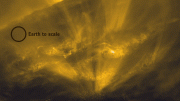
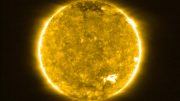
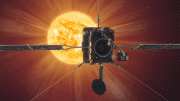
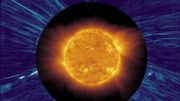
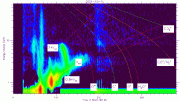
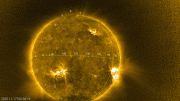
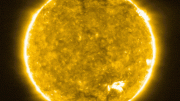
Be the first to comment on "Uncharted Solar Realms: Camera “Hack” Lets Solar Orbiter Peer Deeper Into Sun’s Atmosphere"